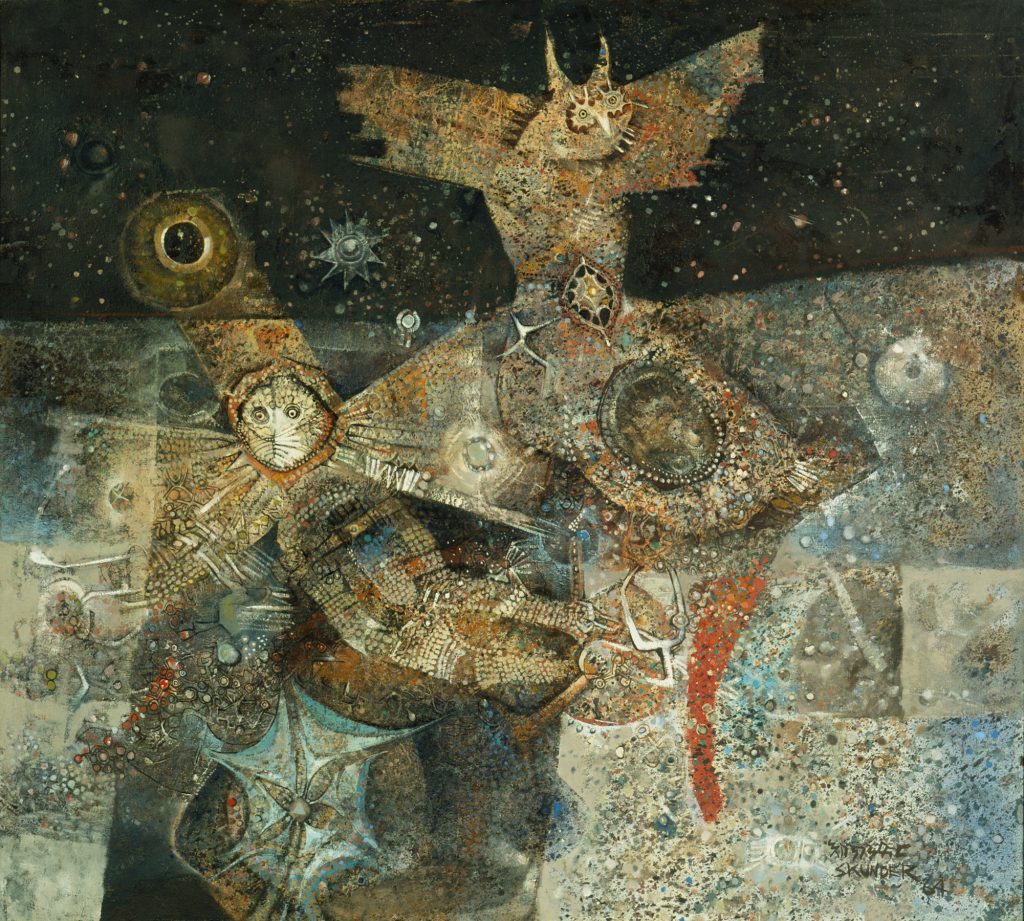Liberation and Futurity

Skunder Bohossain Nightflight of Dread and Delight 1964
Oil on Canvas with collage
5x5 ½ ft
Bohossain’s Nightflight, also referred to sometimes as Juju’s flight of Delight and Terror immediately captured me. I think it is the blurring of edges, the multiplicity of forms in the aesthetics, and the necessity to figure out different layers of structures formed from this superimpositions that appealed to me. Presented in The Short Century exhibition, this work by the Ethiopian born and London-educated artist who eventually settled in the United states 10 years in 1972, speaks to the logics of Pan-Africanist intellectual thought and ideas of liberation pertinent at the time. Where many African countries that at this point existed under European colonial rule were beginning to demand their freedom to govern themselves. This allusion to Juju as a substitute word here used for African philosophy and as embodied through this cosmological aesthetic imagines liberation through an Afro-centric philosophical lens, and the drawing on African cosmological epistemologies through which to envision futurity for incoming independent countries across the continent. Furthermore, the aesthetic synthesis of this ideology with surrealist aesthetics also employs a sort of possibility and framing for imagination through the allusion to these animal figures (cat and owl) envisioned as cosmological beings formed through geometric patterns.


Comments
Post a Comment